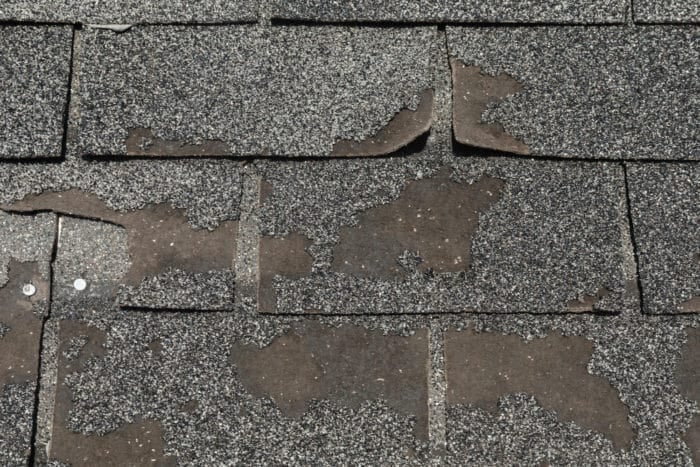Let’s face it, objections are naturally a part of the sales process; they’re hard to avoid. To be prepared, you can come up with some lines to have in response for each objection you receive from a homeowner. However, if you don’t understand as a salesperson what an objection is, where they come from, and how to handle them on a fundamental level, you might have some trouble connecting with potential customers. So before diving into each of them, let’s talk about what a roofing sales objection is.
What is an Objection in Roofing Sales?
We can refer to an objection as your customer’s on-the-spot answer based on the limited information they have. So let’s say you’re selling to someone with a storm-damaged roof. They have damage, their insurance covers it, and all they have to do is pay their deductible- it should be a slam dunk, right?
But if somebody is giving you an objection about the process, it’s because they don’t have all of the information yet, so they’re answering you based on the little information they have. In this article, you’ll find the seven most popular objections people give to roofing sales reps and the best way to handle them. Here’s the first one:
Objection #1: “I Need to Talk to My Spouse.”
This is a popular one that you’ve probably heard over and again. And it raises the question, “When is the best time to handle this objection?”
It’s before the issue even comes up.
This issue comes from mistakes that were made during two different points in time:
- Before the inspection appointment is made
- During/After the Inspection
If you’ve gotten to a point where you sat down with a customer and tried to get a deal signed, but all in the absence of a spouse, when did you make a mistake? At the time you set up the appointment.
Initially -When you’re setting up an inspection time, it’s great to ask, “Hey, is there another decision-maker?” and explain that you’d love to have both partners around when talking about storm damage or stuff like insurance.
So ask, “What time will work better for you both? Thursday or Friday? 4:30 or 5:30? By doing this, you’re ensuring they will be together in the first place.

At the house/property– Let’s say you’ve done that and showed up, and one of the decision-makers isn’t there. Go ahead with the inspection. Take pictures, measurements, and everything else that you need.
Then come down, knock on the door, and tell the person present about the damage you found and show them the pictures you took. Then ask, “When will be a good time to come back and discuss everything with the both of you?” Instead of going through the whole sales presentation and wasting 45 mins before hitting an objection, plan a new time to come to chat with them both.
This way, you won’t have to go through the entire presentation twice.
Objection #2: “Can we Get a Bid?”
Bid requests is to be expected from a lot of homeowners that you may come into contact with. You’ve probably met someone telling you, “Alright, I’m interested, but can you leave us a bid? Someone told me we’d need to get like three bids?” It’s an okay question because we all have the freedom of choice. So show them you understand.
Here’s a great way to respond — “So Mr. Jones(for example), here’s the deal. I understand what you’re asking for, and I get that request a lot. But with insurance claims, that’s how it used to be. If this was a retail job, or if you called me out of the blue and said, ‘Hey, I want to get a new roof and there are a couple of different companies right here, and I want to see the price,’ it obviously would make sense for me to leave you a bid. But with insurance claims, it’s a different ball game.”
In the past, insurance companies would allow you to bring in three bids when you have roof damage and turn them in. But guess which one they’d pick—the cheapest one! With this method, it was found that, unfortunately, customers didn’t like being forced to choose a contractor based on their insurance company’s budget.

Customers weren’t getting the contractors or materials that they wanted. So insurance companies changed how they went about it. They now use a software called Xactimate. Xactimate is a database that has, by zip code, the fair market price value of materials.
With this, they’ll never pay by bid because the price per sqft. for retail jobs for private roofing contractors is considerably higher than what insurance pays. They’d do anything to pay as close to zero dollars because they’re a business, and businesses are there to make money.
“So, Mr. Jones, what I’m going to do is, when your insurance adjuster comes, I’m going to bring something close to a bid — a line-by-line estimate that has all your materials and labor itemized, and the adjuster is going to do the same thing. Since they use the same software, if your adjuster has the same line of items as I do, our price should be the same, and if it’s not, we figure out why. Makes some sense?” This way, you’re validating them and making them feel heard, but also coming to a solution.
Objection #3: “I’d Like to Talk to My Insurance Agent.”
Let’s say the homeowner says, “Although a new roof is a good idea, I’m not sure I’d love to pay more on insurance for now.”
Your best response would be – “Mr. Jones, I completely understand why you feel that way. My parents have had the same insurance agent for like 15 years. But guess what? They eventually came to learn what insurance was meant for – emergency. Insurance is for when an emergency occurs, ensuring your house is covered.
Basically, insurance gives you back the money you gave them that hasn’t had to be used. So really, it’s okay to love your agent, but you’re getting your money back, not theirs. Because of the storm season, your rates (and everyone else’s in your area) will probably increase whether you file a claim or not.
So if your rates go up, you might as well get a free roof out of it. Right?”

Objection #4: “I Don’t Think I Have Damage.
Have you ever met people who think they have no damage after a hail storm?
Here’s a great way to respond to them:
“I completely understand you feeling that way, and honestly, you may be right! But have you had a storm restoration expert up on your roof yet? You can guess the answer already, “No, I didn’t get up there, but I’ve tried to look and didn’t see any issues.” And with the steepness of a roof, you certainly don’t want them going up to make sure.
So you make it straight, “Sir, here’s the deal. If it were a hurricane or tornado, it’d be pretty obvious. You’d have shingles and debris from the roof all around your yard. But hail damage isn’t quite as apparent as that of wind. The asphalt shingles are water-tight and wind-resistant, protecting the roof from environmental damage.
So when hail hits your roof from about 30,000 feet above, they leave an impact and bounce off. It will not blow a hole through your roof or decking unless you have a bowling ball-sized hail. However, with the sun, wind, rain, slit, snow, heating, and cooling all working together, the asphalt granules eventually begin to wash away.

In most cases, you won’t have leaks and stuff today, next week, or even next month. But it leaves these bruises all over your shingles. Just like punching someone on the arm, bruises won’t show up immediately, but you’d be sure to see them if the punching continues.
You’d be leaving a weak, thin layer that can be punched open at any time. But this can take months to happen, so you can’t tell from ground level what extent of damage has occurred. And it takes just 15 minutes to inspect, so why not?”
Objection #5: “I’m Just Not Interested,” or “Let Me Think About it.”
These pretty much stump everybody. And the fact is there’s no one-size-fits-all response to answer that. But if up to this point somebody says let me think about it, it’s because you’ve gone through some steps here already. You’ve already laid a foundation by discussing some information.
You’ve asked questions and probably even handled a couple of objections up to this point. So, here’s the best time to dig a little deeper. What do you feel they’d want to think about? Have you explained what hail damage is and why it’s better to get on it sooner rather than later?
If yes, then it’s a no-brainer. If they’ve got damage, insurance will pay for it, and all they’d be on the hook for is the deductible. So after walking your customer through this process, what else could be behind the hesitant feeling?
Most guys are reluctant due to their uncertainty and lack of trust in the company. They want to make sure they’re working with a reputable company, which they should. So you can hand them your card to look up your company and check your testimonials.
You have to be flexible and observe their body language to know what direction you want to encourage them to go in.

Objection #6: “You’re Disturbing Me”
“You’re the tenth person to knock on our door, and I’m hoping that people stop doing this.”
Your best response:
“Honestly, I’m sorry to bother you. But do you know why people have been going around knocking on doors? I’ll tell you if you have 90 seconds. I promise I’m not trying to sell you anything. You can shut the door in my face if you think I am.
There’s so much wracking going on around here in the neighborhood because the storm you guys had a week or two ago damaged some roofs. I’ve been doing free inspections for the neighbors, and here’s what I’ve found (show them some pictures of the damaged shingles of some guys in the neighborhood. Especially ones familiar to them).
Insurance companies pay for these damages—they’ll put a new roof, siding, gutters, and the like. But, you don’t know if you have enough damage to file a claim until a professional storm restoration expert looks at your roof and tells you what’s happening. If I go up and don’t see anything, I’ll come down and apologize—I mean good news for you and bad for me since you don’t have any damage.
But if you notice any damage later, feel free to invite me back. I’d come to inspect it, document it, and walk you through what you need to do.” And it would help if you always had a ladder with you in case they’d want you to hop up the roof right there.

Through any objection remember to, if you can, connect emotionally with them. It takes patience and effort not to be reactive, especially when they’ve started responding with some abrasiveness. You want to show empathy, like, “I hate to knock on your door; like really hate it.” If they see that you’re genuine about it, they might soften and listen to you.
Objections will always show up in selling. But what counts for your win is knowing these little tricks and utilizing them as the need arises.
















